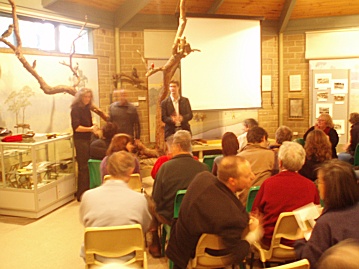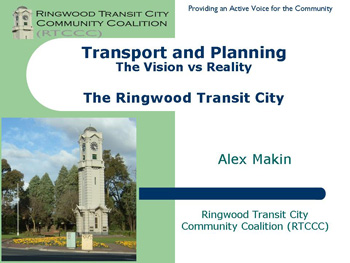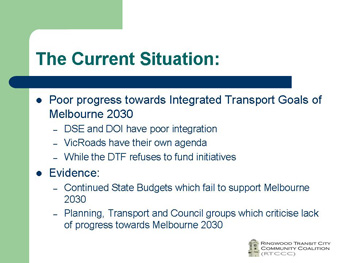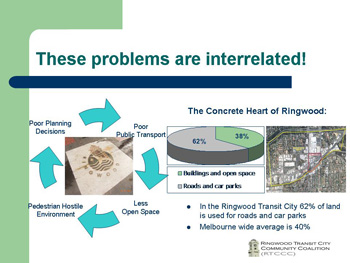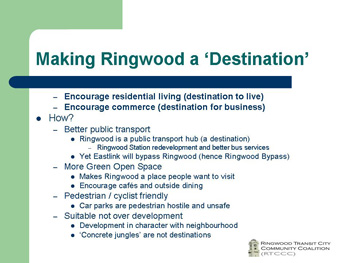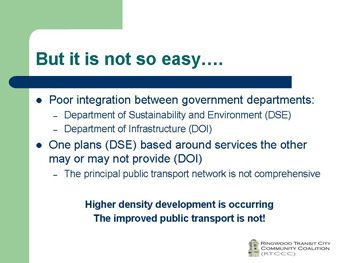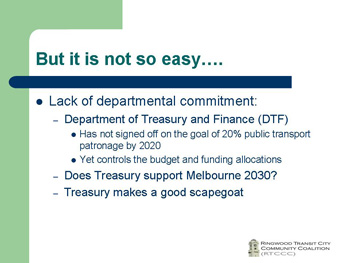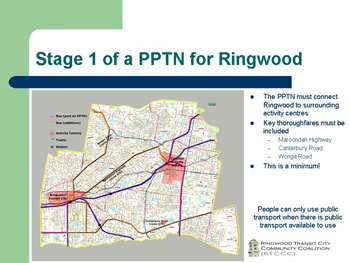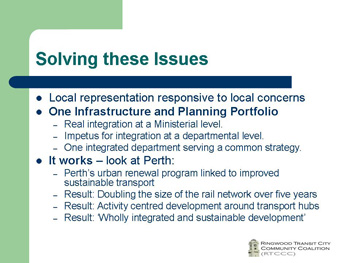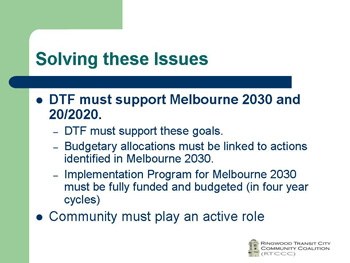The Age recently conducted a number of features exploring the woes facing Melbourne’s public transport system.
The difficulties facing Melbourne’s public transport stem from the lack of leadership provided by the State Government in ensuring progress towards the goal of increasing public transport modal share to 20% by the year 2020. In fact public transport modal share has remained static at 9%, due to long promised rail extensions being delayed and dismal bus services that often fail to run during evenings or on weekends.
People cannot use public transport if no public transport is available. Likewise people will not use public transport while it is slow, infrequent and overtly complex. Melbourne’s bus network needs to be streamlined and the SmartBus program, which delivers frequent and readily bus services must be accelerated.
The Public Transport Users Association (PTUA) released its five year plan as did the Metropolitan Transport Forum (MTF) and the Committee for Melbourne (which includes transport operators).
It is ridiculous that major roads such as Canterbury Road or Maroondah Highway do not have bus services seven days per week from morning through to midnight. While some improvements will be provided (including the Stud Road SmartBus and Sunday bus services for Maroondah Highway) these are just the beginning.
Likewise it is hypocritical for the government to establish an urban growth boundary and speak about sustainable development when many of the outer areas of Melbourne lack fixed rail access. For example, it is invalid and contradictory to envisage high-density development in Doncaster Hill when there is little public transport available to provide travel options for residents other than already congested roads.
The reason Melbourne’s public transport is not being upgraded is due to the fact that the government has failed to successfully integrate the functions of planning and transport. This is despite Melbourne 2030 and its goal for integrated planning which envisaged transport provision being kept apace with urban growth and revitalisation.
Five years ago Perth embarked on a similar Metropolitan Strategy and revitalised its ailing public transport system through linking public transport improvements with urban revitalisation and development. In Perth it was successful but in Melbourne this strategy is failing.
The Western Australian Government (headed by Labor’s Geoff Gallop) has an integrated Infrastructure (responsible for Transport) and Planning Portfolio, in Victoria we have separate Planning and Transport portfolios and a statutory authority known as VicRoads which has direct access to the Minister. In Perth the equivalent of VicRoads was merged into a combined Transport entity ensuring that all transport decisions were decided on merit.
As The Age reports, numerous groups from different perspectives and backgrounds have called for a similar overhaul to occur in Victoria:
GROUPS as diverse as local councils, employers’ representatives and public transport users have called for an overhaul of the way Victoria manages transport and urban planning.
Victoria needs a more “holistic” approach, says Robert Dunlop, infrastructure spokesman for the Victorian Employers’ Chamber of Commerce and Industry and Macquarie Bank executive director.
Peter Newman is one of Australia’s most respected transport planners and was responsible for the revitalisation of Perth:
A similar demand was a key priority in a report by the Metropolitan Transport Forum, a transport lobby made up of a group of Melbourne councils.
Co-written by leading transport planner Professor Peter Newman, the report says Victoria needs “an accountable and integrated transport planning agency”.
Professor Newman told The Age that VicRoads was a formidable bureaucracy, with much greater access to power and funds than the public transport directorate, which is submerged within the Department of Infrastructure.
“It would be good to see them get back on a more even footing,” he said.
Ultimately the advantages VicRoads has over the Public Transport Division of the Department of Infrastructure affects the outcome of transport decisions:
Public Transport Users Association spokesman Alex Makin pointed to VicRoads’ $1 billion annual budget, saying it spent money “making plans for new roads we don’t need and then lobbying government, business groups and the media to get them built”.
Under 2030 the Government says it wants to double public transport use by 2020. But there is increasing doubt that this can be achieved without a major rethink on transport priorities.
Based on the current lack of progress towards improving public transport modal share, the goals of Melbourne 2030 will remain unachievable until transport and planning is truly integrated:
Critics point to Western Australia, where planning and transport is combined under one minister and where Perth is now celebrated for major public transport reforms and new rail lines in particular.
“The success in transforming Perth from a public transport backwater into a public transport-oriented city occurred due to the merging of the transport and planning functions,” said Mr Makin.
Unfortunately the lack of response from the current Transport Minister makes it appear that the government is once again unwilling to undertake the necessary reforms:
Last night Transport Minister Peter Batchelor did not respond directly to a question when asked whether an overhaul of transport and planning was possible.
The Bracks Government’s self appointed Infrastructure Planning Council recommended the merger of VicRoads and the Department of Infrastructure back in 2002. The lack of progress made by the Bracks Government towards improving public transport has demonstrated just how foolish it was to ignore this independent advice.
Until the government acknowledges that Melbourne 2030 is doomed to fail unless VicRoads is abolished and planning and transport integrated through the appointment and responsibility of one Minister very little will actually improve within Melbourne and Victoria.
